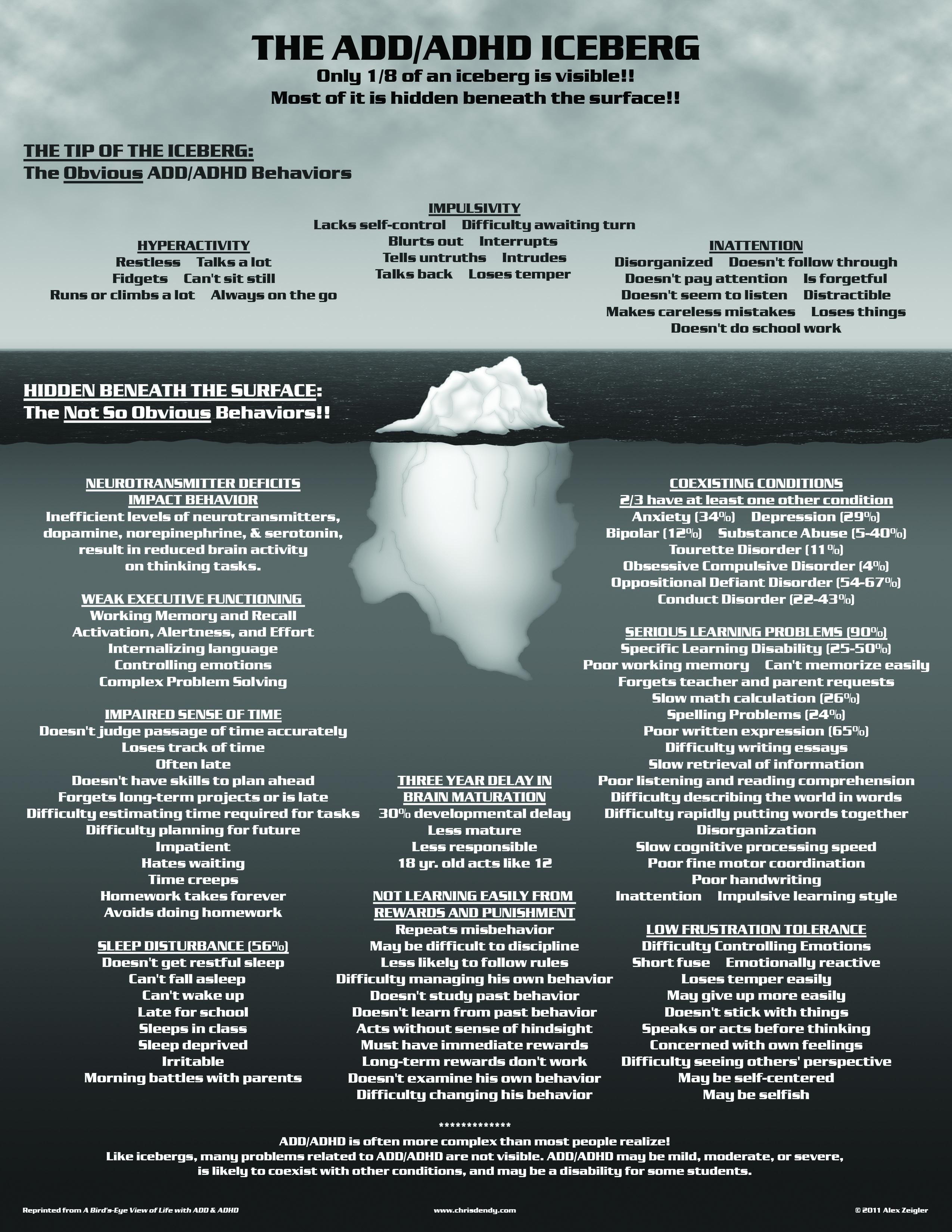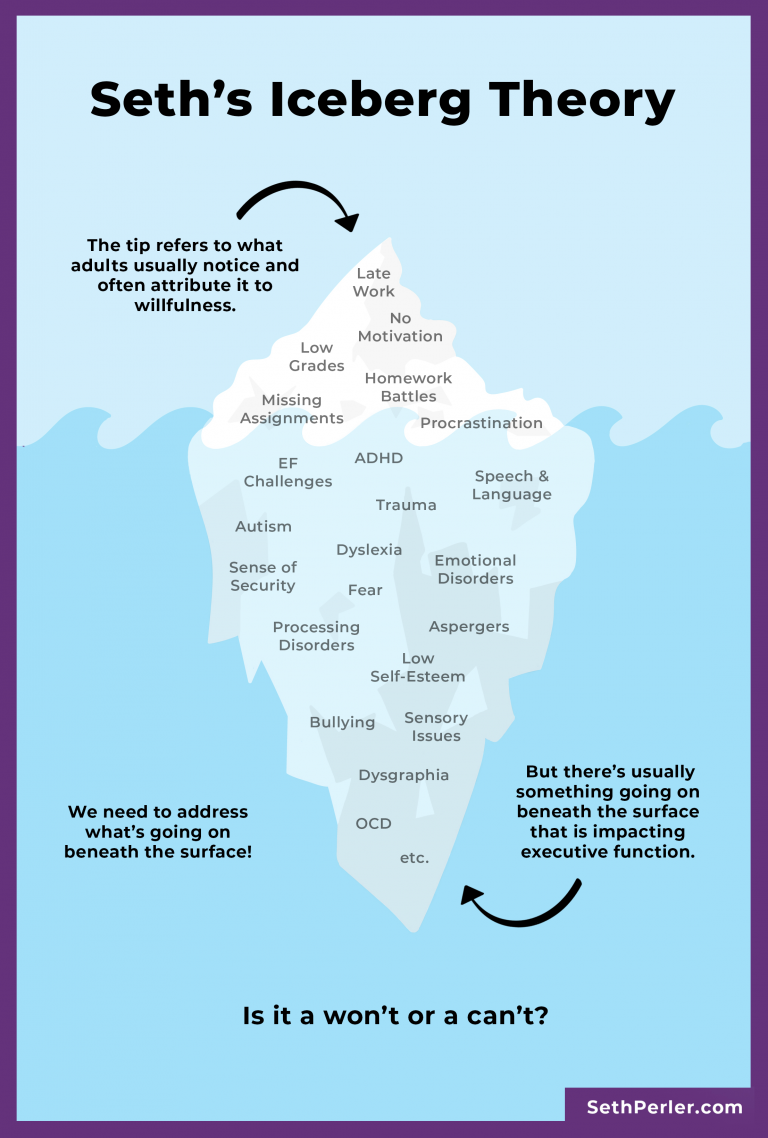

These conditions could include mood disorder, anxiety, autism, learning disabilities, executive functioning deficits, conduct disorder, and more. Co-Existing Conditions It’s estimated that 50 to 60 percent of individuals with ADHD also have one or more coexisting conditions.

They may have a different way of expressing emotion, poor self-regulation skills, or poor communication skills - whatever the root cause, emotional dysregulation impacts how they function at home, in the family, at school, and in social interactions with peers.


Unanticipated facets of ADHD lie under the surface. What’s under the surface is just as (if not more) important when raising or teaching kids with ADHD. They’re important, of course, but they’re not the whole picture of ADHD. The 10 percent we easily see above the watermark are the hallmark symptoms of ADHD: inattention, impulsivity, and hyperactivity. This is a fitting analogy for ADHD and for parenting kids with ADHD. Yet, because it was obscured, the ship stayed the course and it was disastrous. What was under the surface was very important it required a change in direction. The ship’s crew couldn’t see the iceberg in its entirety, and it proved fatal. The mass of ice below the surface destined catastrophe. Think about this: It was an iceberg that sunk the “unsinkable” Titanic. As much as 90 percent of the mass of an iceberg sits underwater - under the surface where we cannot see it. I’m not the first to make this analogy, but I don’t see it enough so I’m repeating it - and asking you to literally start by visualizing an iceberg. Let’s imagine that your child’s attention deficit disorder ( ADHD or ADD) is an iceberg. This is critical to keep in mind and to guide daily teaching and learning tactics. What caregivers and educators see poking above the surface may only be a fraction of ADHD symptoms. Attention deficit disorder is multi-faceted, far-reaching, and largely hidden.


 0 kommentar(er)
0 kommentar(er)
